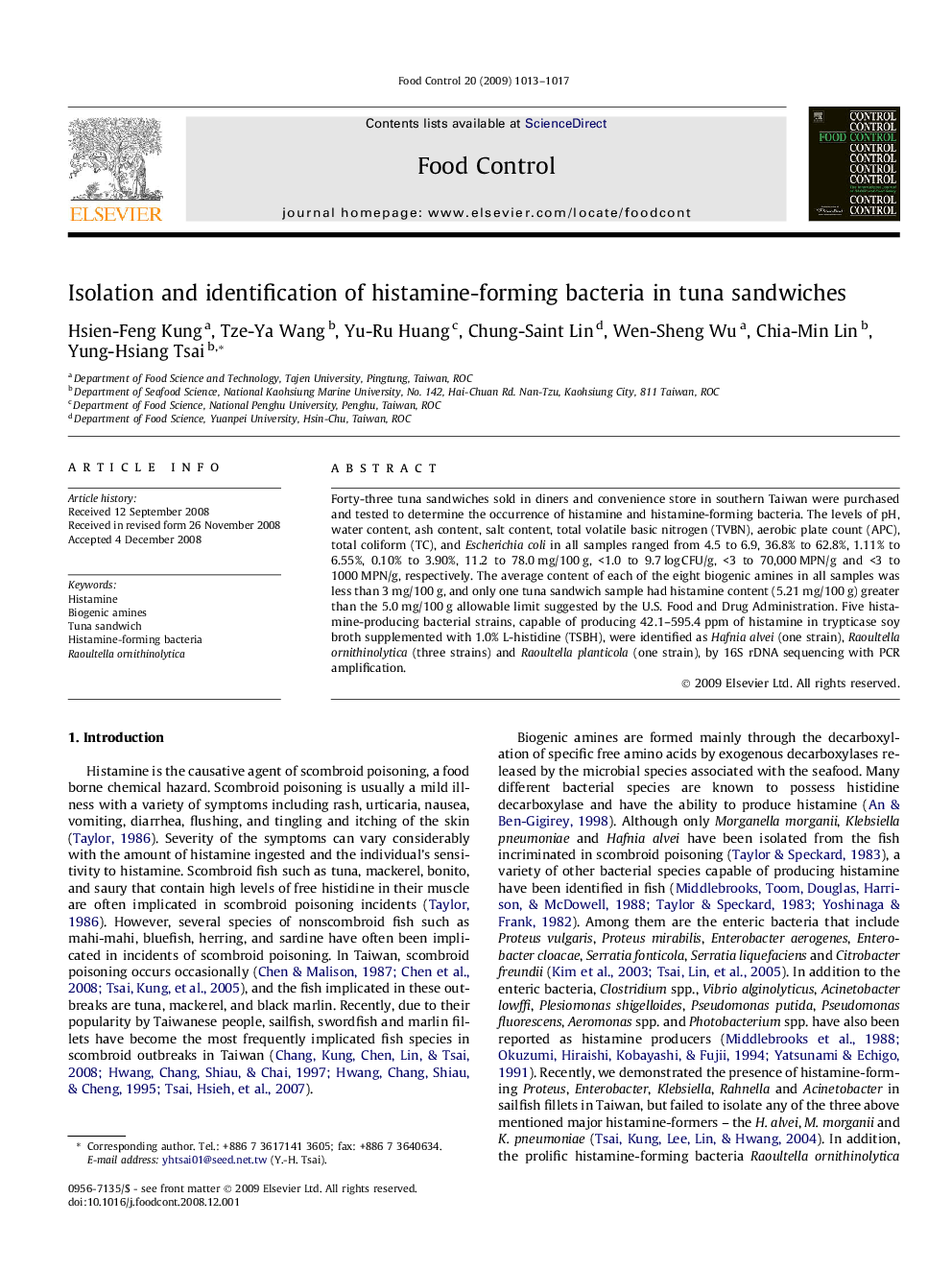| Article ID | Journal | Published Year | Pages | File Type |
|---|---|---|---|---|
| 4560073 | Food Control | 2009 | 5 Pages |
Forty-three tuna sandwiches sold in diners and convenience store in southern Taiwan were purchased and tested to determine the occurrence of histamine and histamine-forming bacteria. The levels of pH, water content, ash content, salt content, total volatile basic nitrogen (TVBN), aerobic plate count (APC), total coliform (TC), and Escherichia coli in all samples ranged from 4.5 to 6.9, 36.8% to 62.8%, 1.11% to 6.55%, 0.10% to 3.90%, 11.2 to 78.0 mg/100 g, <1.0 to 9.7 log CFU/g, <3 to 70,000 MPN/g and <3 to 1000 MPN/g, respectively. The average content of each of the eight biogenic amines in all samples was less than 3 mg/100 g, and only one tuna sandwich sample had histamine content (5.21 mg/100 g) greater than the 5.0 mg/100 g allowable limit suggested by the U.S. Food and Drug Administration. Five histamine-producing bacterial strains, capable of producing 42.1–595.4 ppm of histamine in trypticase soy broth supplemented with 1.0% L-histidine (TSBH), were identified as Hafnia alvei (one strain), Raoultella ornithinolytica (three strains) and Raoultella planticola (one strain), by 16S rDNA sequencing with PCR amplification.
